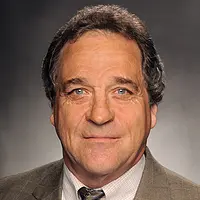RESEARCH TRIANGLE PARK, NC— When medicine is injected, a little bit stays behind in the syringe. It’s not much, but depending on syringe design and the cost of the drug, this waste — or dead space — can add up to as much as $2,300 per year for a patient, according to a new study from researchers at RTI International and the UNC Eshelman School of Pharmacy.
The research findings were published in JAMA Internal Medicine.
Syringe dead space is the leftover fluid that remains inside the syringe after the plunger is fully depressed. In syringes with high dead space, often those designed with detachable needles, the leftover amount is equal to 3 percent of the volume of the medication dose on average. In syringes with a low-dead-space design, such as those with an integrated needle or a cone-shaped plunger, the volume of leftover medication averages 10 times less at 0.3 percent.
“It is a difference of fractions of a milliliter, but when some of these medications can cost more than $20,000 a month, it adds up.” said Christine Oramasionwu, Pharm.D., Ph.D., lead author of the study and an assistant professor in the Division of Pharmaceutical Outcomes and Policy. “Low-dead-space design should be adopted as the industry standard for all syringes in order to reduce preventable and expensive medication waste.”
Researchers identified 17 medications administered using high-dead-space syringes and seven using low-dead-space syringes. The total volume of the injection ranged from 0.25 to 5 milliliters for high-dead-space medications and 0.08 to 1 milliliters for low-dead-space medications. The median cost for a month’s supply of medication packaged in high-dead-space syringes was $4,443 and $3,412 for low-dead-space syringes.
The median value of the wasted medicine per dose was $5 for high-dead-space medications and about fifty cents for low-dead-space medications. Over one year, the cost of the waste for high-dead-space medications ranged from $558 to $2,329 (a median value of $1,638) compared to $68 to $205 (a median value of $125) for low-dead-space medications.
“In addition to reducing medication waste, low dead space designs reduce the probability of HIV and viral hepatitis transmission if they are shared by people who inject heroin or other drugs intravenously,” said William Zule, DrPH, senior public health analyst and Fellow at RTI and co-author of the study.
The researchers reported the median, or middle value, of most monetary ranges because of the high variability of cost among the relatively small number of medications included in the study. The high and low price for a 30-day supply of the 17 high-dead-space medications was $50 and $20,552. The high and low price for a 30-day supply of the seven low-dead-space medications was $716 and $29,728.
- Syringe dead space, the leftover fluid that remains inside the syringe after the plunger is fully depressed, can add up to as much as $2,300 per year for a patient
- The research findings were published in JAMA Internal Medicine and conducted by researchers at RTI International and the UNC Eshelman School of Pharmacy
To request an interview, contact our Media Relations team.
